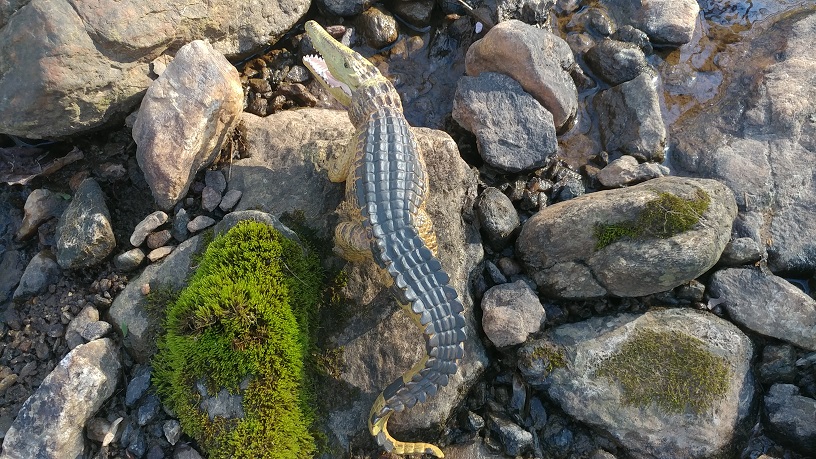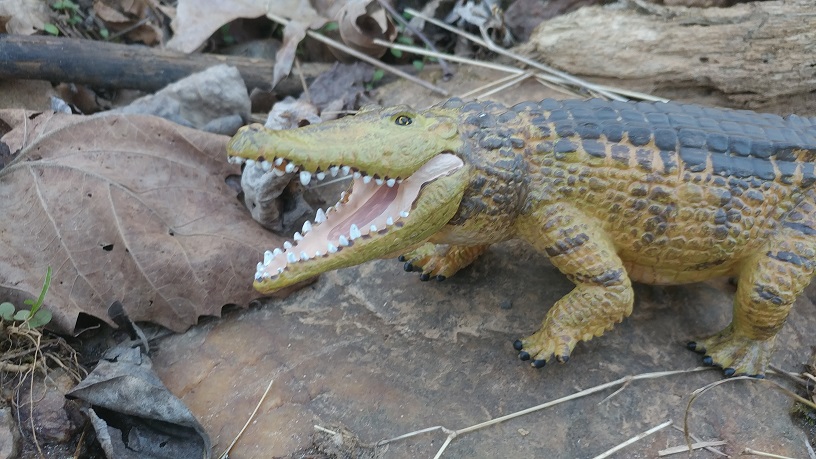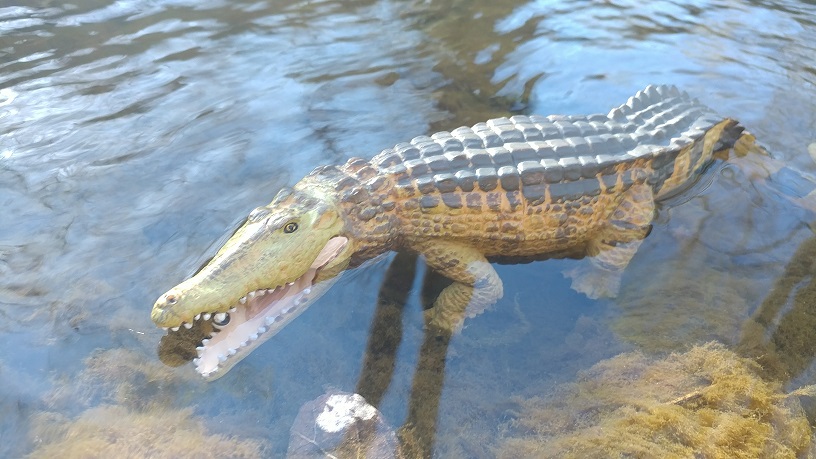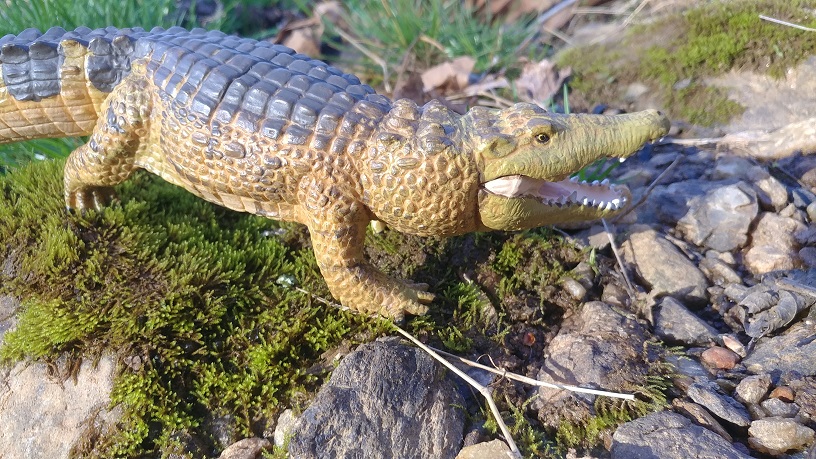One of the most powerful animals in the Animal Kingdom, having a bite force of over 3,000 psi and able to hold its breath underwater for over an hour, the crocodile is an impressive animal that is feared and yet even revered in some cultures, notably the Ancient Egyptians who worshipped them. Crocodilians are the only reptiles that care for their young after they hatch, and probably the most intelligent reptiles as well. Their jaws are lined with incredibly sensitive sense organs that are more sensitive than human fingertips! And they are some of the most prehistoric-looking extant animals in the world; survivors from the Dinosaur Era. Somehow, they managed to survive when the dinosaurs became extinct. Today I will be reviewing the crocodile from Safari Ltd.’s Incredible Creatures collection, a unique line of large, soft rubber versions of the World’s many animals.

While marketed on Safari’s site as a saltwater crocodile, it is my ‘professional opinion’ from studying this figure that the sculpt most closely depicts a Nile crocodile (Crocodylus niloticus) because of its coloring, the shape of the head, and the appearance of the osteoderms on the back of its neck. This is the species the Ancient Egyptians would have known well, for in ancient times the Nile crocodile was common all the way to the waterways of the Nile Delta in Goshen where the Nile empties itself into the Mediterranean Sea. Crocodiles often were seen from the reed boats that sailed the Nile. They were both hunted and kept alive at temples to the Egyptian deity Sobek.


The figure is colored a yellow-brown and yellow-green with brown and dark brown detailing, bright white teeth, and yellow eyes with black pupils. A tongue is sculpted inside the pink mouth. The claws are black. The crocodile is constructed of soft plastic with almost a rubber-like texture, which gives this reptilian figure a cool sensory experience when it is held in the hands. It feels very much like a real reptile. The scales are nicely sculpted, with the large belly-scales so coveted by leathermakers nicely contoured on the belly. The scutes on the back are also nicely done. Smaller, round scales adorn the sides and legs. The rectangular osteoderms on the back of the neck add weight to my theory that this is a Nile crocodile. I posed it in the creek to simulate it swimming in the Nile.

This may not be the very most lifelike figure of a Nile crocodile in existence but it is certainly not the worst either. The coloring is fairly realistic and the detailing of the scales is very good. I think the paintjob is quite artistic, and the detail of the mouth and scutes is quite well done. For the price, this is a very nice figure for anyone who likes Nile crocodiles–perhaps a fan of Ancient Egyptian culture. Looking at Safari’s website, an updated version of this figure is in the works, with a darker paint job that more closely resembles a Saltwater crocodile. But you can probably find this one on eBay for a reasonable price, like I did.


Disclaimer: links to Ebay and Amazon on the AnimalToyBlog are affiliate links, so we make a small commission if you use them. Thanks for supporting us!




Good analysis of this being a Nile croc. A forum member, who is also a professional zoologist, came to the same conclusion.
Couldn’t it be an american crocodile instead?
Those also inhabit saltwater bodies I think and the figure seems to have the same bumpy snout they have.